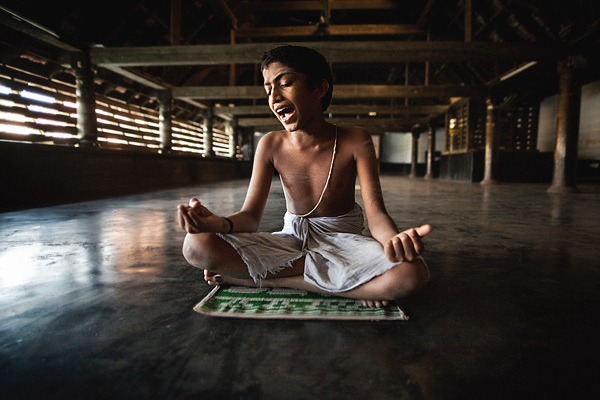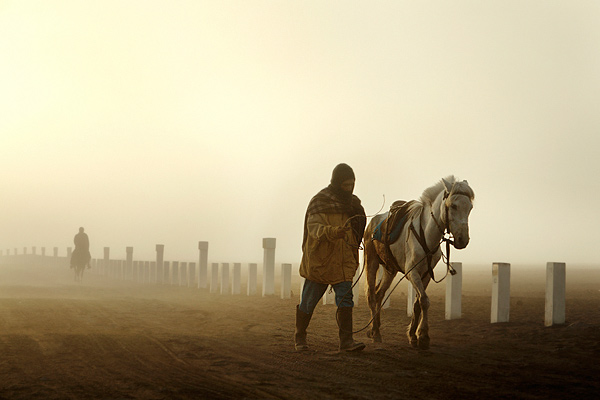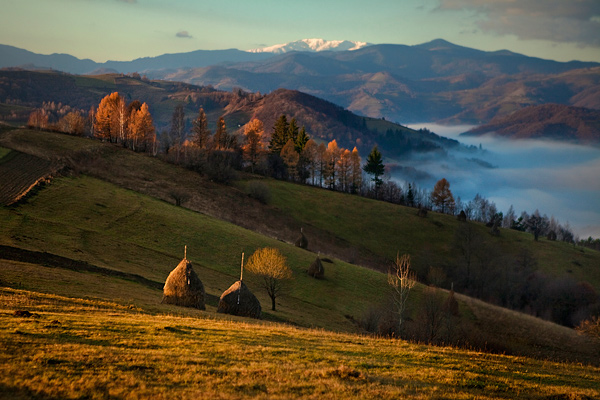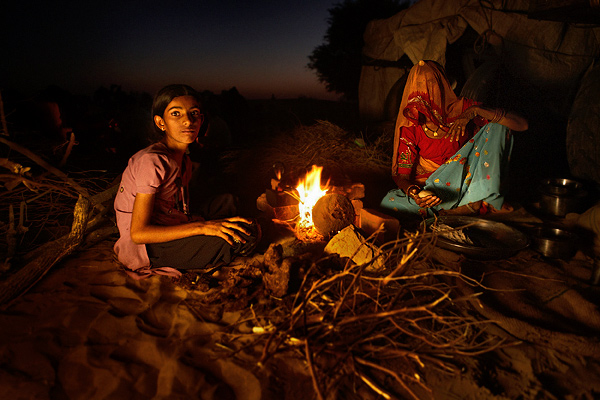原文:http://digital-photography-school.com/travel-photography-mistakes
译言地址:http://article.yeeyan.org/view/lilimarleen/108279
Later this week we will be launching a brand new dPS eBook on the topic of Travel Photography – written by travel photographer Mitchell Kanashkevich. This post, written by Mitchell, is the first part of a short series introducing some of the mistakes many new travel photographers make.
下一周,我们将会发布一本以旅行摄影为主题的dPS(数码摄影学校)电子书,作者为Mitchell Kanashkevich。以下这篇文章就是由Mitchell所写的一系列文章里的最初一篇,指出了一些很多新手旅行摄影师会犯的常见错误。
As you can gather from the title, this post relates to travel photography. However, I want to note that travel photography is a broad topic and so for most part, the mistakes that I’ll discuss here are actually made by the majority of those of us who are in the beginning of our journey into the world of photography, regardless of the genre we’re involved in.
正如你在标题中所见,这篇文章是关于旅行摄影的。不过我要说明一下,旅行摄影是一个很广的命题,这里所谈的只是一小部分。我要讨论的错误通常发生在初涉摄影的新手身上,无论年龄几何。
Because I wanted to go into some detail and to provide some visual examples, we’ve decided to split this post up into two parts. Without further ado, here’s part I and check back for part II tomorrow.
由于我会讨论一些细节,并提供一些样例,因此这篇文章会分为两个部分。为了避免麻烦,这里是第一部分,明天我再贴出第二部分。
1. Having misconceptions about equipment
1.误解器材
The two main misconceptions that we most often have about equipment when we’re starting out in photography are:
一开始接触摄影时,最容易对摄影器材产生的误解有两点:
The latest, greatest gear results in better photos.
最新、最好的器材能拍出更好的相片。
The gear you have is not good enough because your images are not. In other words you blame the equipment.
相片之所以不够出色是因为器材不够精良。换言之,都是器材惹的祸。
A camera doesn’t take the photo, nor does any piece of photographic equipment. Photos are made by you – the photographer. Sure in some very rare cases you might have a technical issue with a camera body or a lens, but for most part that’s not the concern. Most of the essential photographic gear is better than good enough these days, it has been for the last five years or so (with the development of affordable digital SLRs), one just has to know how to use it to its full potential.
相机自己可不会拍照片,任何一件摄影器材都不会。相片是你——摄影师自己拍的。当然,在极少的情况下,你会碰上相机机身或者镜头有技术故障,但大部分时候都不是故障的问题。近五年来(随着数码单反发展得越来越亲民),大部分基本器材已经远远超出了“够用”的范畴,你需要知道的只是如何将潜力发挥至极限。
My advice here in short is – forget about chasing the latest, greatest stuff. Get out there with what you have, figure out how to get the most out of your equipment, learn when to use one lens over another, when to use a tripod and of course, learn about the basics of photography – setting the aperture, shutter speed and ISO. This might seem like the most obvious advice imaginable, but somehow so many aspiring photographers still think that it’s all about the equipment you have, there’s just nothing further from the truth.
我的建议简单说来就是——别再追求最新、最棒的玩意儿。带着你的家伙走出去,找出拍得最好的方法,学习如何选择镜头,什么时候该上三角架,当然还要掌握摄影的基础——设置光圈、快门和ISO。虽然这个建议是如此的显而易见,但不知为何,还是有很多野心勃勃的摄影者仍把一切归咎于设备,离真理越来越远。
2. Not Researching
2.不做调查
When I refer to research, I simply mean gathering as much information as possible about the place you’re traveling to. The best time/season to travel, the DOs and DON’Ts, the modes of transportation – these are the necessities, that we must find out about before every trip in order to have a smooth experience not only as far as photographing, but traveling in general.
这里的“调查”指的是尽可能多地搜集旅行目的地的信息。最佳旅游季节/时间,必做和不必做的事情,交通方式——这些都是必修课程。每次旅行我们都要在出发前弄清楚这些事项,以让自己有一次顺利的出行体验——这里指的可不止是拍照,而是整个旅行。
Beyond the necessities, when photography is the main focus of your trip, it’s worth finding out as much as possible about what’s visually special in the place you’re going to. Sometimes this isn’t going to be obvious, you might have to dig a little, but when you do, a great number of photographic opportunities arise.
除上述那些必备课程之外,如果摄影是旅行的主要目标之一,还应该尽可能多的找出目的地看得到的特色。有时候这些特点并不那么显而易见,你得费一番功夫,但一旦有所收获,拍出好照片的几率将大大提升。

Traditional Vedhic school, Thrissur, India
印度喀拉拉的一所传统Vedhic学校
I’ve chosen to include the image above because the story behind it is a good example of what even simple research can lead to. The photo depicts a Namboodiri boy (priest caste) chanting the Vedhas (which can be described in short ancient Indian bits of wisdom) in a traditional Vedhic school in the town of Thrissur. This place (the school) is not a major attraction, it’s not something that the regular visitor travels to Thrissur for, but to me it provided an incredibly interesting photographic opportunity. Despite the fact that I would have never just wandered in there by random chance, as the school is isolated from the main town, it wasn’t at all hard to find it or gain access to shoot there, it was simply a matter of knowing that it existed.
我选择这张图片是因为它可谓一个绝佳的例子,照片的背景只需做一些简单的调查便可知道。照片描绘的是在一所传统Vedhic学校里,一个Namboodiri男孩(祭司种姓)吟唱着Vedhas(类似古代印度箴言)的场景。这所学校并不是一个主要景点,普通游客在游览喀拉拉时会去的地方,但对我来说,这可是个大好机会,可能拍得到一些生动有趣的相片。尽管这所学校远离市中心,我永远不会偶然散步走到那里,但如果知道有这么一个地方,要找到那里、得到拍摄许可并不困难。
The reason I knew about it is very simple – I researched and by this I don’t mean that I did something complicated and difficult. I went into the tourist office and chatted to the staff there, telling them that I’m a photographer and that I’m keen to see anything that’s visually interesting and unique in their town. After “picking their brains” for about an hour I got a few bits of useful information and the traditional Vedhic school was one of the places I realised I just had to check out.
我知道那里的原因很简单——我做了调查,并不是很细致、困难的那种。我去了一趟旅行社,和那里的工作人员聊天,告诉他们我是个摄影师,想看看城里有没有什么有趣、独特的东西。他们“绞尽脑汁”地想了差不多一个小时,我得到了一些有用的信息,这所传统Vedhic学校是其中之一,我意识到自己应该去那里看看。
3. Not looking beyond the main attraction
3.只看主要景点
A lot of travel destinations have “must see”, “must photograph” main attractions. Sometimes we get so obsessed with getting an image of these attractions that we fail to see the subjects around them which could be equally or even more photographically interesting.
很多旅游目的地都有“必看”、“必拍”的主要景点。有时候我们一心扑在拍摄这些景点上,忽略了周围的景物,没有发现它们也许也一样有趣,甚至有过之而无不及。
I’ve been guilty of this numerous times in the past and so these days I consciously force myself to look at what else there is to photograph besides the obvious. Sometimes this might even mean that I stay at a place for an extra day or two. I photograph the main attraction and then discover the lesser known yet still photo-worthy subjects. This is how the following image came to be. It was taken in Bromo National park.
想到这些年来我一直强迫自己观察不那么明显的景物,我就有负罪感,有时候这甚至会让我在一个地方停留的时间多上一天甚至两天。我拍摄主要景点,然后致力于发现不太为人所知、但仍值得一拍的主题。这就是下面那张相片是怎么来的。它拍摄于婆罗摩国家公园。

Bromo National Park, Java, Indonesia
印度尼西亚爪哇岛,婆罗摩国家公园
During my first couple of days I shot what everyone shoots there – the Bromo volcano and the neighbouring mountains, from different viewpoints. On the third day, rather than make my way to another viewpoint from which to photograph the volcano and mountains at sunrise, I decided to purposely focus my attention elsewhere. I rode around the area on a rented motorcycle and noticed the spectacular scene of these horsemen walking in the fog through the surrounding volcanic desert.
刚到那里的前几天,我和大家拍的都一样——不同角度的婆罗摩火山和它附近的山峰。从第三天开始,我将视角从拍摄日出时的火山和山脉上转移开来,决定将注意力转移到其他主题。我租了一辆摩托车,骑遍了那个地区,发现一个牧马人穿行在雾里,走在火山岩的荒地上——完美的景象。
4. Not being aware of light
4.忽视光线
Not being aware of light means that you simply shoot whatever you see in any given lighting conditions without giving much thought to the whole matter. Your results might have impact on the viewer every now and then and they might sometimes reflect what you want to say and how you feel about what you see, but more often than not that won’t be the case.
忽视光线意味着你只是单纯地拍下所见到的、任何光照条件下的场景,没有考虑到全局。你的作品也许偶尔能给别人留下深刻印象,有时能反映出你的意图和感受,但更多情况下,它们做不到。
Being aware of light means that you know there are different kinds of light and that the way your image looks will greatly depend on the light you shoot it in. This of course also means that you can make a conscious effort to photograph in the kind of light which will reflect what you want to say and how you feel about the subject you’re photographing.
注重光线意味着你了解不同光线的作用,了解相片的优秀程度要取决于拍摄时进入的光。当然,这也意味着你可以在相片中刻意制造出某种光线效果,以反映你对主题的意图和感受。
Let’s look at a simple example.
我们来看一个简单的例子。

Transylvanian countryside, Romania
罗马尼亚,特兰西瓦尼亚乡村
The landscape in the image above looks beautiful, vibrant and dramatic because it is lit by the golden light during sunrise. I made a conscious decision to photograph in this kind of light because I knew that it would bring the colours present in this scene to life and it would basically “beautify” everything.
相片上的风景是如此美丽,鲜活,因为整个画面笼罩在日出时的金色阳光里。我特意在这种光线下拍摄相片,因为我知道这能让景物显得生气勃勃,每个细节都美轮美奂。
The light enabled me to create an image that reflected what I wanted to say – how beautiful Transylvanian countryside is, as well as to communicate the excitement which I felt. Had I photographed the same scene without considering light, I could have very well ended up with something much less dramatic. I would have likely just photographed the landscape the first time I saw it and that was on an overcast day, when the light made everything look rather grey and drab.
这种光线让我能够营造出这么一个画面:既能很好的反映出我想表达的东西——特兰西瓦尼亚的乡村是多么美丽,还能成为成为一道桥梁,连结起我感受到的兴奋。如果我在同一个场景、没有考虑光线就进行拍摄,我所得到的无疑是一张逊色不少的相片。我可能会在第一次看到它时就拍摄相片,那是一个阴天,当时的光线让一切看起来十分灰暗,死气沉沉。
5. Avoiding artificial light
5.避免人造光
As we get a little more familiar with light and begin to develop an understanding of how it effects our photographs, a lot of us tend to move away from using artificial light, especially flashes.
随着我们对光线熟悉起来,开始了解它们是如何作用于相片,大部分人都会避免使用人造光线,特别是闪光灯。
The reason most of us do this is because we don’t have enough knowledge about artificial light. It’s true that the on-camera flash should indeed be avoided at all costs, but it’s not the only available artificial lighting option and avoiding artificial light altogether means you’ll never see what you can achieve with it, which in my opinion is a big mistake.
很多人这么做是因为我们对人造光的了解还不够。的确,内置闪光灯不管在什么情况下都应该避免使用,但这并不是唯一可用的人造光。如果在任何时候都不使用人造光,你将永远不会知道它能做些什么,要我说,这真是大错特错了。
The artificial lighting tools that I consider a great addition to any serious travel photography enthusiast’s kit are an off camera flash in a softbox and/or a reflector. The reason these tools are great is that they allow you to control the light or to manipulate it. This opens one up to a whole range of creative opportunities or even opportunities to make photographs in situations where it would be impossible to do so otherwise. The following image is a good example of this.
在我看来,值得所有旅行摄影爱好者添置的设备里包括一个柔光箱里的外接闪光灯以及(或是)反光板,这些都是不错的人造光工具。之所以“不错”,是因你可以借助它们控制、操纵光线。这将开创全范围的创作机会,甚至在无法拍照的情况下创造出机会。下来的那张相片就是实证。

Nomads at a camel fair, Kolayat, Rajasthan, India
印度拉贾斯坦Kolayat,骆驼节上的游牧民
The only reason I could make this shot was because I had the artificial light from an off-camera flash in a softbox “assisting” the light from the fire, which on its’ own was no where near strong enough to allow me to make the kind of photo I wanted.
我之所以能拍下这张照片,唯一的原因就是我借助了人造光线——用一个柔光箱里的外接闪光灯“协助”火光。仅凭火光本身是不足以让我拍出想要的效果的。
Without getting into too much more detail because of the constraints of a blog post, I will say that artificial light is a very exciting topic. If you’re interested in learning more about it, particularly portable, artificial light in the form of an off-camera flash and a reflector, you can check out my eBook “Seeing the Light”, which was featured here on DPS a while a go.
限于篇幅限制,本博文就不谈太多细节,我想说的是人造光是一个让人兴奋的主题。如果你有兴趣学习更多,特别是关于移动人造光——比如外接闪光灯和反光板,可以阅读我之前公布在DPS上的电子书“Seeing the Light”。
Stay tuned tomorrow for a continuation of this topic and another 5 mistakes travel photographers often make.
明天继续探讨另外五个旅行摄影者易犯的错误,敬请期待。